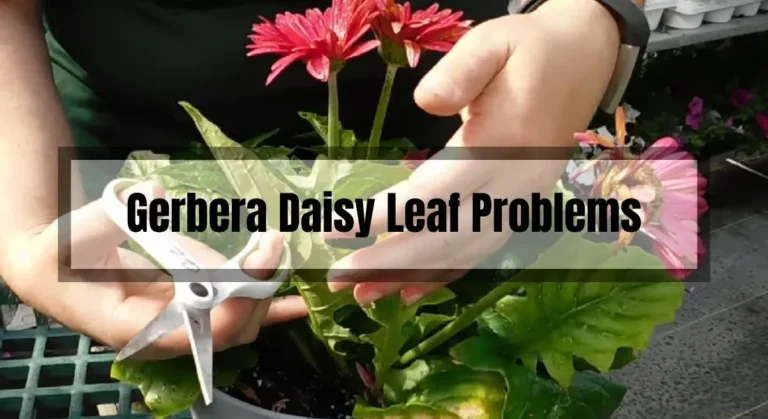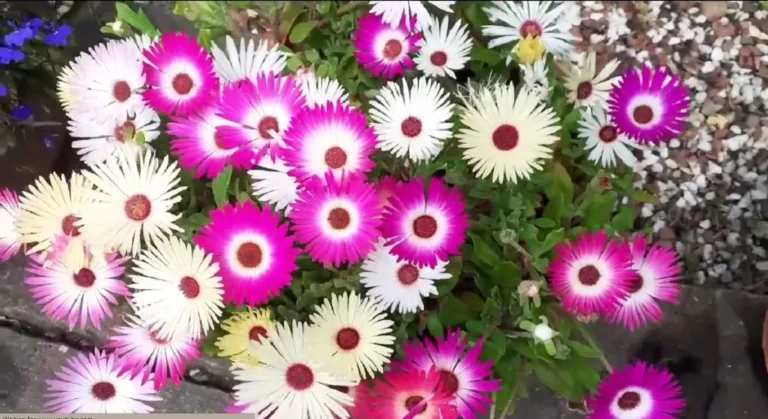Senecio Angel Wings Plant Problems: Troubleshooting and Solutions
Discover the secrets to keeping your Senecio Angel Wings plant healthy and thriving with our comprehensive guide on troubleshooting and solutions.
Learn how to identify common issues, prevent problems, and tackle pests and diseases to ensure your plant remains a stunning centerpiece in your garden. Dive in and become an Angel Wings expert today!
Senecio Angel Wings Plant Problems

1. Weak and Floppy Leaves
- Causes: High nutrient soil, excess water
When it comes to Angel Wings, sometimes we can be a little too good to them. Overly rich soil and too much water can cause the leaves to become weak and floppy. It’s like giving someone too many donuts – sure, it’s delicious, but it’s not going to make them strong and healthy.
- Solutions: Soil selection, proper watering techniques
To prevent weak and floppy leaves, make sure to plant your Angel Wings in well-draining soil that isn’t too nutrient-rich. And when it comes to watering, moderation is key! Overwatering can lead to floppy leaves and other issues, so keep an eye on your plant and adjust your watering schedule accordingly.
2. Rot and Decay
- Causes: Excess rain, poor drainage, inadequate protection
Much like us humans, Angel Wings plants don’t enjoy being drenched all the time. Excess rain and poor drainage can cause your plant to weaken, rot, and eventually die. It’s like wearing wet socks all day – it’s just not a good time.
- Solutions: Proper site selection, drainage improvement, rain protection
To combat rot and decay, choose a planting site that provides adequate drainage and some protection from heavy rain. You can also improve the soil’s drainage by adding amendments like sand, perlite, or compost. And if your plant is in a particularly rainy area, consider using a cover or shelter to keep it safe and dry.
Preventing Common Senecio Angel Wings Issues
1. Soil Selection
- Importance of well-draining soil
Well-draining soil is vital for the health of your Angel Wings plant. It allows excess water to escape, preventing root rot and other moisture-related issues. It’s like giving your plant a nice, breathable pair of shoes – it’ll keep them comfy and healthy.
- Soil amendments to improve drainage
If your soil isn’t draining well, consider adding amendments like sand, perlite, or compost. These materials can help improve drainage and create a healthier environment for your Angel Wings to thrive.
2. Watering Techniques
- Recommended watering frequency
Watering your Angel Wings plant can be a bit of a balancing act. You want to give it enough water to stay healthy, but not so much that it becomes waterlogged. As a general rule, water your plant when the top inch of soil feels dry to the touch. This can vary depending on the weather and the size of your plant, so make sure to keep an eye on it and adjust as needed.
- Signs of overwatering and underwatering
Overwatered Angel Wings plants may show signs like yellowing leaves, weak and floppy growth, and root rot. Underwatered plants, on the other hand, may have dry, crispy leaves, and slow growth. Keep an eye on your plant for these signs and adjust your watering schedule accordingly.
3. Rain Protection
- Outdoor plant positioning
When it comes to protecting your Angel Wings from rain, location is key. Try to find a spot in your garden that offers some shelter from heavy downpours. If you can, position your plant near a wall, fence, or under the eaves of your house to provide some natural protection.
- Using covers and shelters
If natural protection isn’t an option, consider using a cover or shelter to shield your plant from heavy rain. You can use a simple plastic sheet or tarp to cover your plant, or you can invest in a more permanent solution like a small greenhouse or plant canopy. Just remember to remove the cover once the rain has stopped so your plant can continue to soak up all that glorious sunshine.
Pests and Diseases Affecting Senecio Angel Wings
Common pests
- Identification and symptoms
Like any plant, Angel Wings can fall prey to a variety of pests. Keep an eye out for common culprits like aphids, mealybugs, and spider mites. These tiny troublemakers can cause damage to your plant by sucking its sap, which can lead to discolored and distorted leaves.
- Treatment and prevention
To keep pests at bay, maintain a healthy environment for your plant by providing proper care and nutrition. If you do notice an infestation, you can try washing the pests off with a gentle stream of water, using insecticidal soap, or releasing beneficial insects like ladybugs to help control the problem.
Diseases
- Identification and symptoms
Fungal diseases like root rot and powdery mildew can sometimes affect Angel Wings plants. Symptoms of these diseases may include yellowing leaves, wilting, and a powdery white substance on the leaves.
- Treatment and prevention
To prevent diseases, ensure that your plant has good air circulation, proper drainage, and isn’t overcrowded. If you do notice signs of disease, you can try treating the affected areas with a fungicide or removing the infected parts of the plant.
Is Senecio Angel Wings Toxic?
Yes, Senecio Angel Wings can be toxic to pets if ingested. It’s best to keep your furry friends away from this plant to avoid any accidental nibbles.
FAQs
How often should I water my Senecio Angel Wings?
Water your Angel Wings when the top inch of soil feels dry to the touch. This can vary depending on factors like weather and plant size, so keep an eye on your plant and adjust your watering schedule as needed.
Can Senecio Angel Wings grow in full sun?
Angel Wings can tolerate full sun, but they prefer partial shade. If they’re exposed to harsh sunlight for extended periods, their leaves may become scorched.
Is Senecio Angel Wings toxic to pets?
Yes, Senecio Angel Wings can be toxic to pets if ingested. It’s best to keep your furry friends away from this plant to avoid any accidental nibbles.
What are the best companion plants for Senecio Angel Wings?
Angel Wings plants pair well with other succulents and drought-tolerant plants like sedum, echeveria, and agave.
How do I propagate Senecio Angel Wings?
To propagate Angel Wings, take a healthy leaf cutting, let it callous over for a day or two, and then plant it in well-draining soil. Keep the soil lightly moist, and in a few weeks, you should see new roots and growth.
Is Senecio Angel Wings toxic to pets?
Yes, Senecio Angel Wings is toxic to cats and other pets if ingested. It’s best to keep your furry friends away from this plant to avoid any accidental nibbles.
Conclusion
There you have it, plant lovers! By understanding the common problems that can affect your Senecio Angel Wings and knowing how to troubleshoot and prevent these issues, you can keep your plant happy, healthy, and looking fabulous.
Remember, a little attention and care can go a long way in maintaining your plant’s wellbeing. So, get out there and show your Angel Wings some love – they deserve it! With the right care and attention, you’ll be able to enjoy the beauty of your Senecio Angel Wings for years to come.
And as you nurture your plants, you’ll find that your green thumb gets stronger, too. So keep learning, experimenting, and growing along with your plants, and soon you’ll be an Angel Wings expert. Happy gardening!
Related Posts:
- Effective Strategies to Tackle Cytisus Battandieri Problems
- Decoding Solanum Crispum Problems: Comprehensive Guide to Plant Care
- Overcoming Geum Problems: The Complete Guide to Healthy Gardening
- Livingstone Daisy Problems: Proactive Steps for a Thriving Garden
- Potted Acer Tree Problems and Their Solutions: A Handy Guide for Home Gardeners





